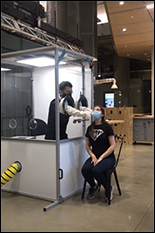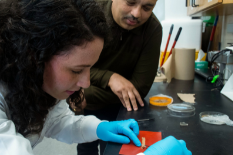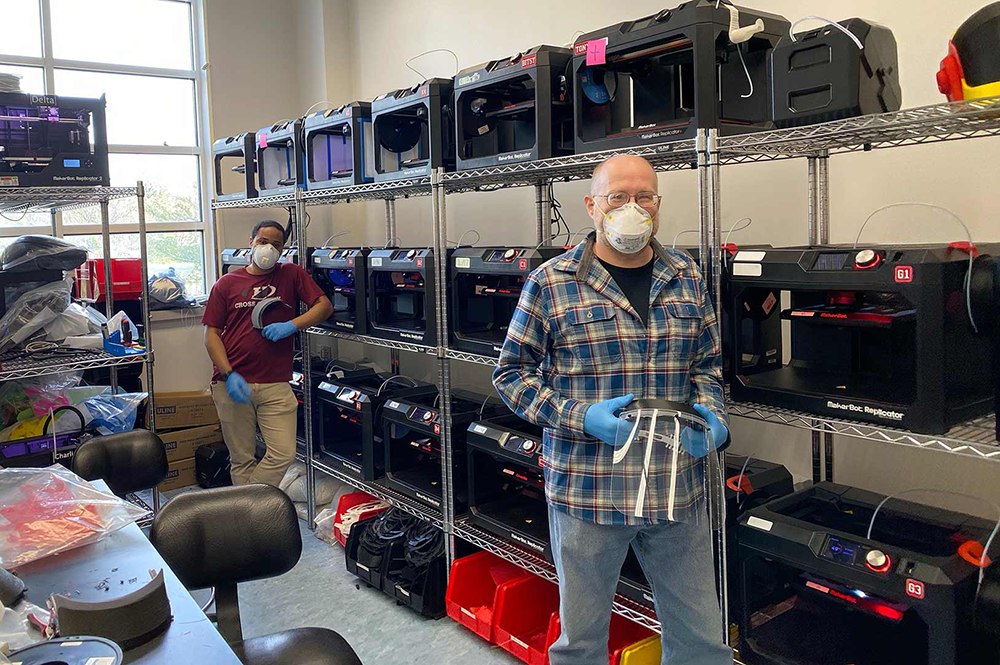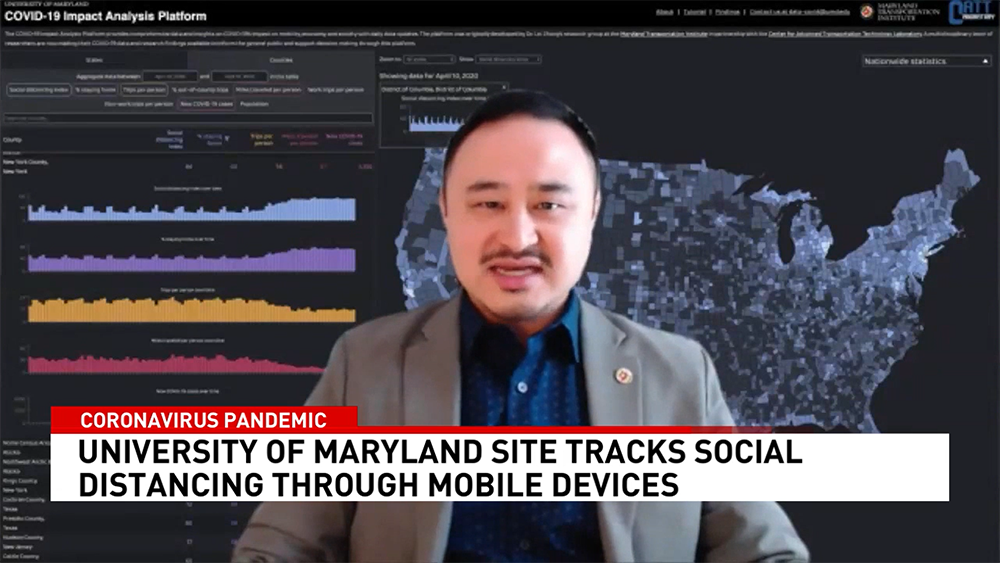News Story
Researchers Design Mobile COVID-19 Testing Booths

As testing for COVID-19 ramps up across the country, the safety of medical personnel who administer the tests remains a high-priority concern, particularly at pop-up testing sites assembled in public spaces.
Recognizing this, researchers at the University of Maryland Robert E. Fischell Institute for Biomedical Devices are working in collaboration with Johns Hopkins University and the Baltimore City Health Department to develop a low-cost, rapidly deployable mobile testing booth – similar to a traditional phone booth in both size and shape. The booth, made primarily of acrylic and aluminum, uses a HEPA filter blower to create a positive pressure system, whereby the air pressure inside the booth is higher than outside the booth. This protects the personnel administering the test by preventing virus particles and other germs from entering the booth. In this way, the booth creates a cleanroom environment similar to those commonly used in the pharmaceutical and medical device industries to test products and medical equipment without the threat of contaminants.
Extending from the front of the booth are gloves that allow the medical personnel inside to administer the test to someone outside the booth without making direct contact. The gloves are of a specialized, chemical-resistant grade, which makes them sturdy enough to withstand constant cleanings before each new patient.
For the testing procedure, the patient sits outside the booth in a chair seated next to the gloves. The medical personnel inside the booth uses the gloves to retrieve a testing swab from a tray mounted on the outside. He or she then uses an intercom system to ask the patient to tilt their head, before using the swab to collect a sample from the cavity between the patient’s nose and mouth. The medical personnel then collects the swab via a tray attached on the outside of the booth. Once the patient vacates the area, test site personnel thoroughly clean the gloves, chair, and front side of the booth. When the person inside the booth is ready to receive the next patient, he or she steps on a pneumatic switch to display a signal.
University of Maryland Department of Mechanical Engineering Assistant Professor Axel Krieger (Fischell Institute/Maryland Robotics Center) and Fischell Institute senior engineer Kevin Aroom led the efforts to develop the first prototypes of the booth. The duo worked in close collaboration with mechanical engineering Ph.D. students Jiawei Ge and Lidia Al-Zogbi, both of whom are members of Krieger’s Medical Robotics and Equipment Lab.
Together, the team hopes their rapidly deployable testing booth could help ensure the safety of those working to administer COVID-19 tests - a need that is likely to grow in the coming weeks and months.
Published May 13, 2020








